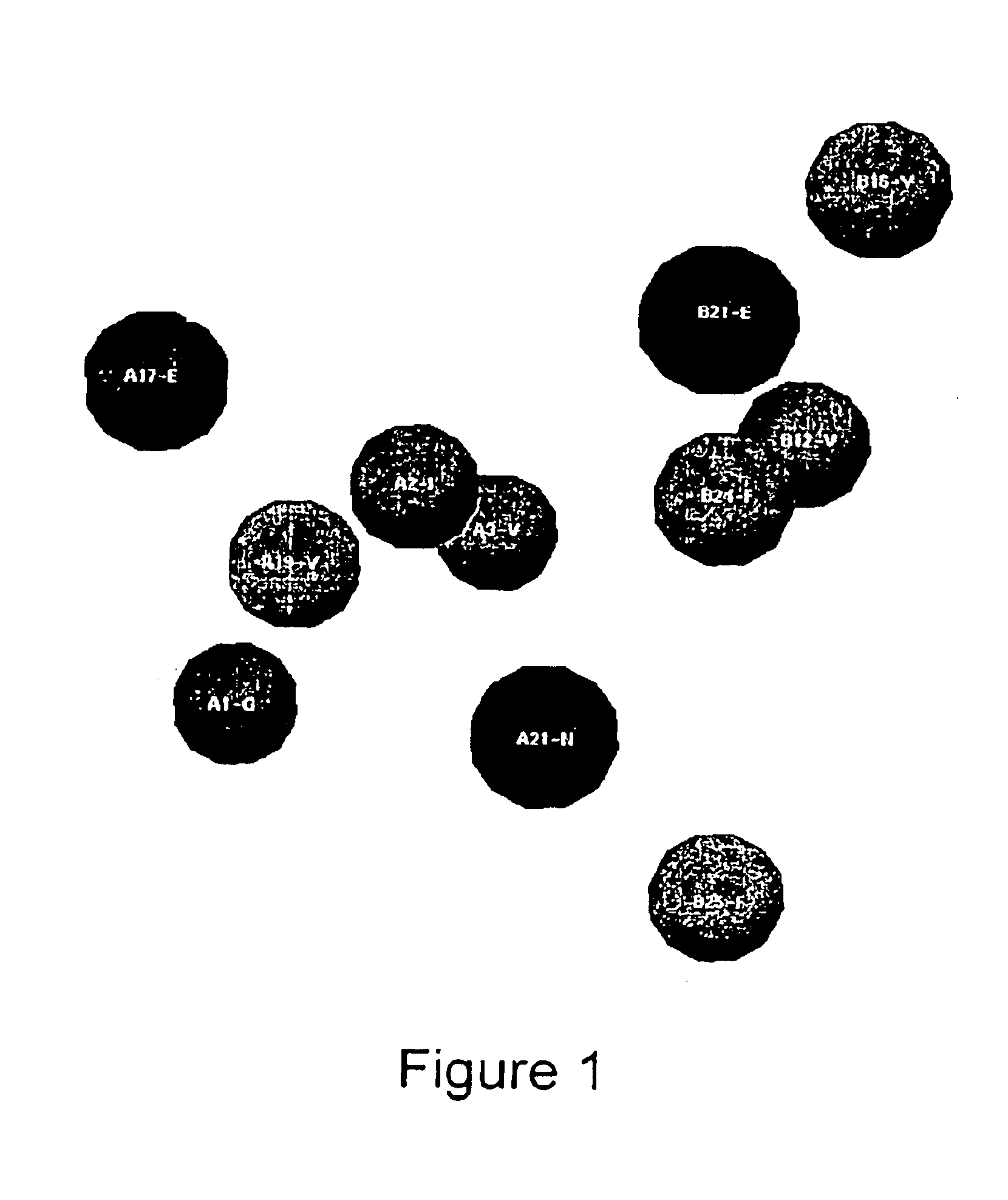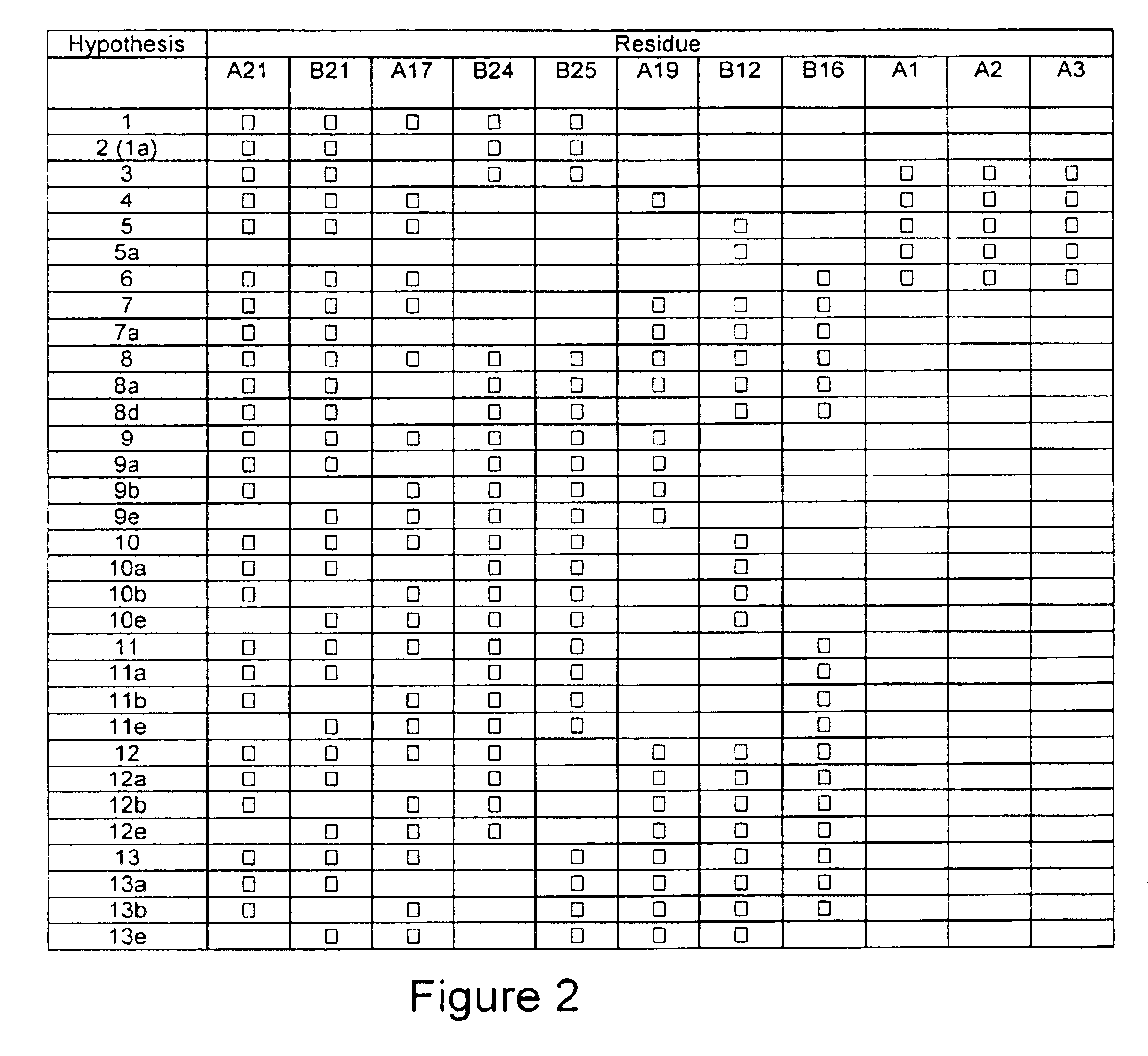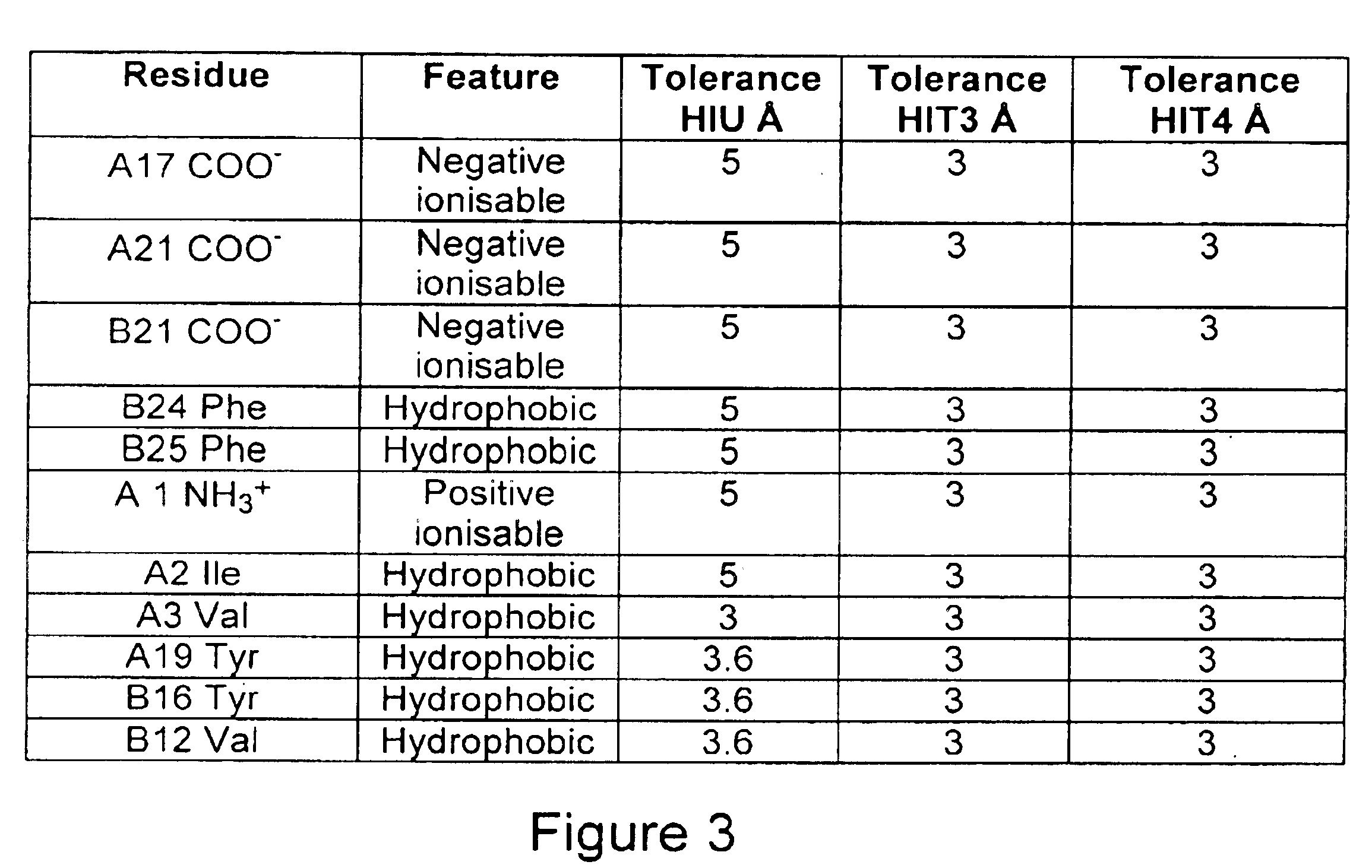Use of non-peptidyl compounds for the treatment of insulin related ailments
- Summary
- Abstract
- Description
- Claims
- Application Information
AI Technical Summary
Benefits of technology
Problems solved by technology
Method used
Image
Examples
example 1
7-[3-(4-Acetyl-3-methoxy-2-propylphenoxy)propoxy]-3,4-dihydro-8-propyl-2H-1-benzopyran-2-carboxylic acid sodium salt hydrate (IM 129)
[0355]This compound may be synthesised by the method described by S. W. Djuric et al. (27), incorporated herein by reference.
Effect on Insulin Binding
[0356]IM 129 competes with insulin for binding to a number of receptor sources. Displacement plots from competition studies conducted using membrane-bound receptor preparations display a characteristic skewed bell-shaped isotherm with a peak in 125I insulin binding at about 100 to 200 μM. At higher concentrations, IM 129 inhibits insulin binding with an apparent Ki between 320 μM and 550 μM. A typical displacement plot from four separate experiments can be seen in FIG. 6. In contrast, purified receptor preparations yield a less complicated displacement plot with an estimated Ki of 189 μM (LIGAND, 1-site fit), as can be seen in FIG. 7, which is consistent with observed differences in insulin binding to mem...
example 2
4,4′-Methylenebis[3-hydroxy-2-naphthalenecarboxylic acid] (IM 025)
[0360]4,4′-Methylenebis[3-hydroxy-2-naphthalenecarboxylic acid] is commercially available from the Sigma Chemical Company.
Effect on Insulin Binding
[0361]IM 025 competes with insulin binding to insulin receptors from a number of sources with an estimated Ki of 100-400 μM, as seen in FIGS. 12 to 14. FIG. 12 shows a typical competition experiment of IM 025 on 125I insulin binding to human placental plasma membranes. The calculated Ki over 5 experiments is 335 μM±34 μM. FIG. 13 shows a typical competition experiment of IM 025 on 125I insulin binding to CHO.T11 cells. The estimated Ki is 137-337 μM (LIGAND, 1-site fit) over two experiments. FIG. 14 shows a typical competition experiment of IM 025 on 125I insulin binding to WGA.IR. The estimated Ki is 108±32 μM (LIGAND, 1-site fit).
Effect on Biological Activity
[0362]As can be seen in FIGS. 16 and 17, IM 025 is an antagonist of insulin action. IM 025 causes a dose dependent ...
example 3
7-[3-(4-acetyl-2-ethyl-5-hydroxyphenoxy)propoxy]-3,4-dihydro-8-propyl-2H-1-benzopyran-2-carboxylic acid sodium salt (IM 071)
Effect on Insulin Binding
[0363]FIG. 17 shows that IM 071 competes for insulin binding to HPPM in a dose dependent manner, with an inhibition constant (calculated for two experiments) of 186 μM±33 μM. IM 071 is structurally related to IM 129 and is likely to have similar antagonistic effects of insulin in biological assays.
PUM
| Property | Measurement | Unit |
|---|---|---|
| Biological properties | aaaaa | aaaaa |
| Hydrophobicity | aaaaa | aaaaa |
| Ionicity | aaaaa | aaaaa |
Abstract
Description
Claims
Application Information
 Login to View More
Login to View More - R&D
- Intellectual Property
- Life Sciences
- Materials
- Tech Scout
- Unparalleled Data Quality
- Higher Quality Content
- 60% Fewer Hallucinations
Browse by: Latest US Patents, China's latest patents, Technical Efficacy Thesaurus, Application Domain, Technology Topic, Popular Technical Reports.
© 2025 PatSnap. All rights reserved.Legal|Privacy policy|Modern Slavery Act Transparency Statement|Sitemap|About US| Contact US: help@patsnap.com



